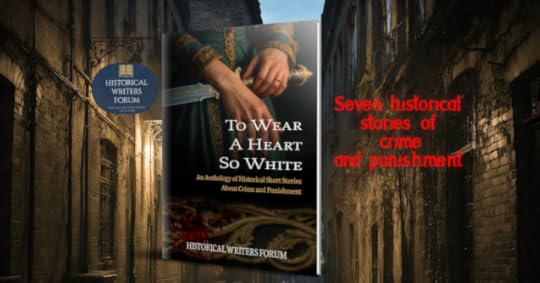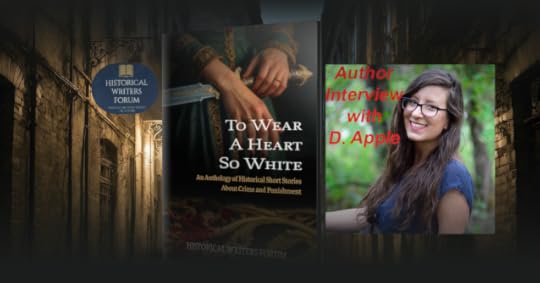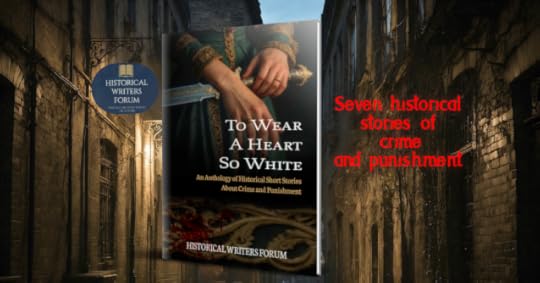Virginia Crow's Blog: Crowvus Book Blog, page 8
December 4, 2024
4th December - More Christmas Things Appear...
Today was cleaning day, where we spend the day giving the house (mainly the downstairs rooms) a really good clean. As a result, throughout the day, a few more Christmassy things were appearing.
While I was cleaning, I could hear the music from a biscuit tin we'd been gifted a few Christmases ago. It makes an appearance every year. The biscuits are long gone, but the tin is lovely, and doubles up as a music box!
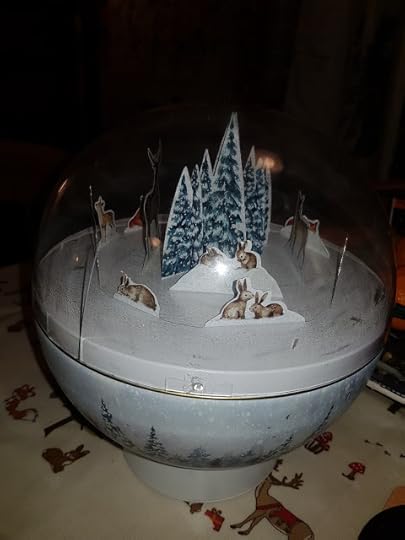
The tablecloth is another thing to make an appearance today! Mum bought this for when we had the little nieces over for Christmas, but we're all young at heart so it's wonderful to see it out again!!
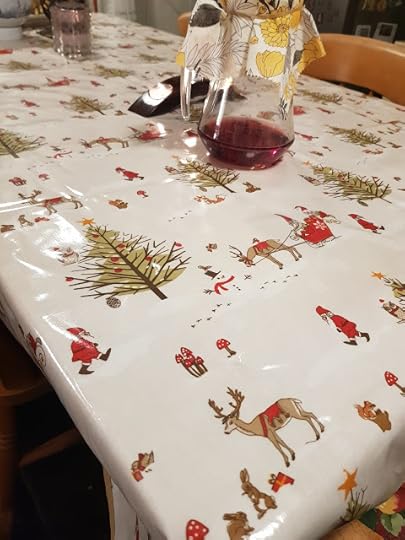
Then, there's the special Grinch oven mitts. These are a new addition to our Christmas collection. Judith made them earlier this year. She's very talented with her quilting, and she even used special green fancy thread to make it extra Christmassy. They are a luxury, and practical too!
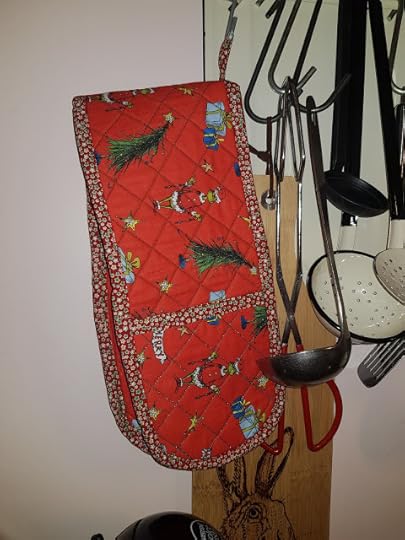
Finally, we have the Christmas cactus which hasn't just made an appearance, but the exquisite flowers are at their most glorious!!

December 3, 2024
3rd December - Angels From the Realms of Glory
A staple of our Christmas season is The Children of Green Knowe. Tonight, Mum read a bit more from the stunning 70th Anniversary copy which Judith just won with her short story. Judith has also added a new addition to our Green Knowe collection with this angel carving. We are still unsure if it will be a Guardian Angel or a Welcoming Angel.

Tonight it was my turn to open the Advent Calendar. We draw names from a hat jug, and all hope that we end up with Christmas Eve!!
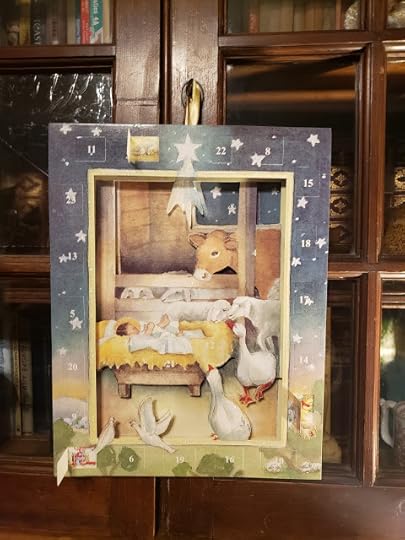
And finally... These two puppies are absolute angels when it gets round to their Advent Calendar time. They are little menaces the rest of the time, but they sit so nicely when they know there is food involved!

December 2, 2024
2nd December... The Spirit of Christmas Past
And we're already on the 2nd December! I'm still thinking it's November, and probably will do until we put the tree up on 14th! (All ordered, by the way, and we're going a little bit different this year with an Alaskan tree, from the Wee Shop just down the road. Shop local when you can!
Today, our two pictures have a Spirit of Christmas Past theme...
The snowman makes an appearance every year, with a little bit of titivating by Mum to mend a year's worth of storage. It's an an sweetie jar, covered in cotton wool, topping with a cotton wool head. To access the sweeties inside, you just remove the head. Sounds a bit barbaric, but the snowman looks very happy about it! The scarf was my brother's when he was at primary school. The hat has been around for as long as I can remember. And to glance at him is to take a trip down memory lane for me!

The next photo is the first Christmas card of the year, this time from Uncle Neville. We always wait until we're altogether to open the cards, usually in the evening after work. Opening Christmas cards is always a nostalgic moment, thinking back to the past in a wistful, yet grateful, way. And I love - I hope we get many more before the Big Day!

December 1, 2024
1st December: 300 Ingredients for Advent
We're back, with our advent blog! After some deliberating, we opted for the title "300 Ingredients for Advent", with a mind to upload pictures of items we associate with our Christmas.
For the 1st December, our "ingredient" is Irish coffee. We only have Irish coffee at this time of the year, so it tastes and smells of Christmas. If you'd like to try your own...
* Mix 1 shot of whiskey (today I used non alcoholic whisky) with 1 teaspoon of brown sugar.
* Brew some coffee. While it's brewing, whisk some thick double cream until it stiffens.
* Leave the metal spoon in the glass while you pour hot coffee in. This should stop the glass from cracking. Pour the coffee, leaving a gap at the top.
* Spoon the cream on top, but don't mix it in. There should be a distinct line between the coffee and the cream.
* Sit back by the fireside, and enjoy!!
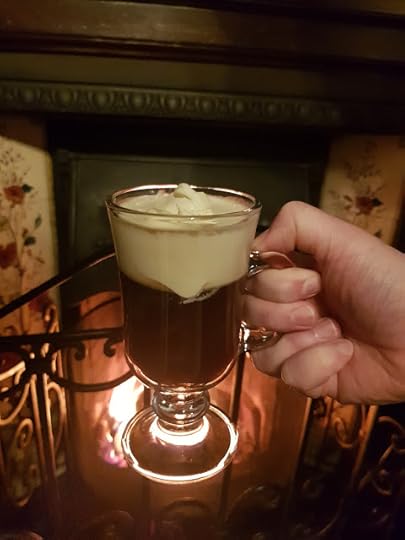
November 28, 2024
#HistFicThursdays - To Wear a Heart So White (Again!)
Yes, yes, I know it's this one again, but this is the last time it can count as a New Release! This month, this little book has sold dozens of copies and had thousands of page reads. So, if you're not one of those people... what are you waiting for?!
So let's meet the book...
A cost for every action, and a price for every deed.
The Historical Writers’ Forum proudly presents seven stories of Crime and Punishment, from across the ages. From an anchoress to a war hero; from Italy to Missouri; this anthology has a story for everyone.
Included stories are:
The Ignoble Defence - Virginia Crow
Agatha’s Eyes - Rachel Aanstad
A Pact Fulfilled - Eleanor Swift-Hook
Carte de Viste - Ronan Beckman
A Dish Served Cold - Brenda W. Clough
Shadows of the Adriatic - Tessa Floreano
A Dangerous Road - D. Apple
To Wear a Heart So White is available here on #KindleUnlimited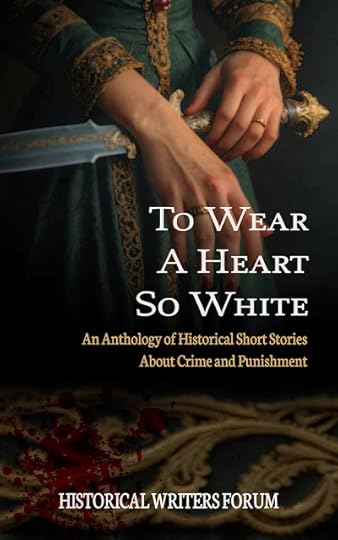
Now, let's meet the authors...
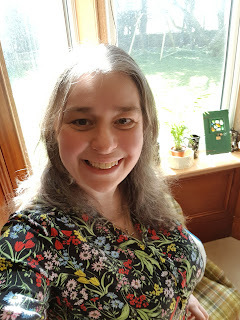 Virginia Crow
Virginia CrowVirginia Crow is an award-winning author of historical fiction. Her writing borders on the edge of reality, challenging the beliefs and superstitions of bygone days.
She lives in Caithness, where her life is dictated by Orlando and Jess, her two spaniels.
Rachel Aanstad
R. K. Aanstad is a writer, artist, and historian. She lives in the Pacific Northwest surrounded by books, cats, and silly little dogs. She has a dollhouse kit company called Tilly Valley Miniatures and writes books about Shakespeare’s plays. She is currently writing Shakespeare’s Influences for Pen and Sword to be published in 2025.
 Eleanor Swift-Hook
Eleanor Swift-HookEleanor Swift-Hook enjoys the mysteries of history and fell in love with the early Stuart era at university when she re-enacted battles and living history events with the English Civil War Society. Since then, she has had an ongoing fascination with the social, military and political events that unfolded during the Thirty Years’ War and the Wars of the Three Kingdoms. She lives in County Durham and loves writing stories woven into the historical backdrop of those dramatic times.
Her six-book series, Lord’s Legacy, traces the story of Philip Lord, a mercenary commander with a reputation for ruthlessness gained in the wars raging across Europe, who has returned to England at the opening of what will become the First English Civil War. But he returns with a treason charge hanging over his head and in search of his identity and heritage. The truth about that lies in the hands of a mysterious cabal calling itself the Covenant, and their secret conspiracy which began a century before.
The story is largely told through the eyes of Gideon Lennox, a young London lawyer who has some growing up to do. He is honest, and intelligent, struggling with the changing reality as war overthrows the things he values. His worldview is broken apart and remoulded by the extraordinary people he is thrust into contact with and the demands made on him.
You can learn more about Eleanor and her books on her website: eleanorswifthook.com
 Ronan Beckman
Ronan BeckmanRonan Beckman is a retired American educator who has lived in the UK for over 30 years. He often writes historical fiction based on the lives of real people that he has discovered through his genealogical studies of the family tree. The character of Sergeant Sven Stenander is the story of Ronan’s great-great-great grandfather. Many of the events in Sven’s colourful life were outlined in a poem written in Swedish that was handed down by a distant cousin, and several news articles that Ronan discovered in his research.
Brenda W. Clough
Brenda W. Clough is the first female Asian-American SF writer, first appearing in print in 1984. Her latest work is a novelette, ‘Clio’s Scroll’, which appeared in Clarkesworld in July 2023. A historical novel A Door In His Head won the 2023 Diverse Voices Award. Her novella ‘May Be Some Time’ was a finalist for both the Hugo and the Nebula awards and became the novel Revise the World. Marian Halcombe, a series of eleven neo-Victorian thrillers appeared in 2021.
Her complete bibliography is up on her webpage brendaclough.net
 Tessa Floreano
Tessa FloreanoTessa Floreano writes historical tales about Italians—by moonlight or candlelight—set in Europe and the Pacific Northwest.
Her first romantic mystery, SLAIN OVER SPUMONI, set in post-WWI near Venice, was published summer of 2022 and won First Place in the Novella category by the Chanticleer International Book Awards. Her debut nonfiction book, ITALIANS IN THE PACIFIC NORTHWEST, about early settlers in Idaho, Oregon, and Washington from 1880 to 1950, was published in fall 2023. It is a Finalist for a Nellie Bly Award for Journalistic Nonfiction by Chanticleer International Book Awards.
Every few weeks on her Substack, she posts in-depth stories about Italian Americans and Italian Canadians in the Pacific Northwest. There’s a project in the works over the next several years to create both a documentary as well as a traveling exhibit based on her nonfiction book and work as a community historian of Italians in the Pacific Northwest.
Her next romantic mystery, set in northern Italy in 1899 in a castle at Christmas—involving matrimony, murder, and mayhem—will be published in the fall of 2024.
Visit her website and sign up for Tramblings, her occasional newsletter, to get all the latest on her writing www.tessafloreano.com/newsletter
D. Apple
 When she’s not pursuing research bunny trails, Danielle is reading. Her happy place is cozying up on the couch with her dog and a 19th-century gothic mystery novel, but you’ll also find her hiking and exploring ghost towns and forgotten graveyards. An avid photographer and language learner, Danielle finds it difficult not to see the story potential in every place or turn of phrase. Sometimes the muses are humorous, and sometimes they are dark, but they always come from an integral place.
When she’s not pursuing research bunny trails, Danielle is reading. Her happy place is cozying up on the couch with her dog and a 19th-century gothic mystery novel, but you’ll also find her hiking and exploring ghost towns and forgotten graveyards. An avid photographer and language learner, Danielle finds it difficult not to see the story potential in every place or turn of phrase. Sometimes the muses are humorous, and sometimes they are dark, but they always come from an integral place.
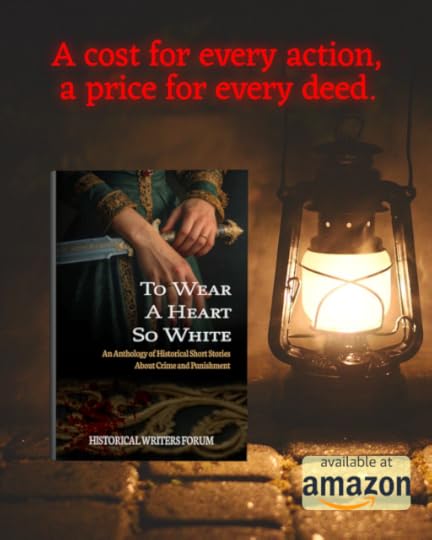
November 21, 2024
#HistFicThursdays - A Little Shameless Promotion!
Today, I'm actually sending you somewhere else for #HistFicThursdays! I'm over on Sharon Bennett Connolly's fabulous blog History... The Interesting Bits! where I'm discussing The Bocksten Man, and the appeal nameless people in history have for Historical Fiction writers. Head over and have a read: .
Psst! This is the book I'm talking about:
To Wear a Heart So White is available here on #KindleUnlimited
A cost for every action, and a price for every deed.
The Historical Writers’ Forum proudly presents seven stories of Crime and Punishment, from across the ages. From an anchoress to a war hero; from Italy to Missouri; this anthology has a story for everyone.
Included stories are:
The Ignoble Defence - Virginia Crow
Agatha’s Eyes - Rachel Aanstad
A Pact Fulfilled - Eleanor Swift-Hook
Carte de Viste - Ronan Beckman
A Dish Served Cold - Brenda W. Clough
Shadows of the Adriatic - Tessa Floreano
A Dangerous Road - D. Apple
November 19, 2024
A Dangerous Road - D. Apple - Qs&As
So let's meet the book...
A cost for every action, and a price for every deed.
The Historical Writers’ Forum proudly presents seven stories of Crime and Punishment, from across the ages. From an anchoress to a war hero; from Italy to Missouri; this anthology has a story for everyone.
Included stories are:
The Ignoble Defence - Virginia Crow
Agatha’s Eyes - Rachel Aanstad
A Pact Fulfilled - Eleanor Swift-Hook
Carte de Viste - Ronan Beckman
A Dish Served Cold - Brenda W. Clough
Shadows of the Adriatic - Tessa Floreano
A Dangerous Road - D. Apple
To Wear a Heart So White is available here on #KindleUnlimited
Now, let's meet the author...
 D.Apple
D.AppleWhen she’s not pursuing research bunny trails, Danielle is reading. Her happy place is cozying up on the couch with her dog and a 19th-century gothic mystery novel, but you’ll also find her hiking and exploring ghost towns and forgotten graveyards. An avid photographer and language learner, Danielle finds it difficult not to see the story potential in every place or turn of phrase. Sometimes the muses are humorous, and sometimes they are dark, but they always come from an integral place.
November 18, 2024
Shadows of the Adriatic - Tessa Floreano - Qs&As
Today, we're continuing our author interviews for the Historical Writers Forum's new anthology, To Wear a Heart So White. I'm delighted to be sharing an interview with Tessa Floreano on the Crowvus blog, to talk about her story, Shadows of the Adriatic. Read on to hear all about her inspiration, writing believable characters, and encouraging readers to see beyond the surface...
First of all, can you please tell us about yourself and your writing?
I am a dual Italian-Canadian citizen residing in the Pacific Northwest, which makes me a pseudo-American, at least that is what The Husband calls me. I enjoy traveling, gardening, reading, and all things Italian. By candlelight and moonlight, I write history about Italians—real and imagined—with a laptop, typewriter, and fountain pens at the ready. My historical era sweet spot ranges from the Gilded Age to the interwar period of the 1920s and 1930s. My stories are always about Italians because they are the people about whom I know most. For settings, I use locales in Europe, the Pacific Northwest, and points in between, both big and small.
In relation to Shadows of the Adriatic, where did your inspiration come from?
All four sets of my grandparents and their ancestors trace their roots back to 1640—and I am not yet finished with the family tree—to San Daniele del Friuli, the same small pre-Alps town in Italy. The town is in the northeasternmost corner of the boot, known as Friuli-Venezia Giulia, about an hour or so north of Venice.
My father was the first to leave after the devastation of WWII, and while his whole family immigrated to eastern Canada, my mother’s family stayed there. We visit them regularly and my research journal fills up quite quickly when I’m touring around the region. Hence, when I saw the call for submissions to the anthology, I jumped at the chance to set a story in Burano, a favorite spot in the Veneto, the region bordering my ancestral one.
Lovely Burano is well-known for its lacemaking and colorful houses, and I thought it would be great fun to imagine some mayhem among all that loveliness. And what better time to set the story than during Carnevale when masked encounters lead to all sorts of mischief?
I was already finalizing my next novel, Murder & Matrimony in the Castello, which is set in 1899 in Padua, also in the Veneto. I was not ready to leave the Veneto nor the Edwardian era or, as the Italians call it, Bella Epoca, so I stayed with the same period in the Shadows story.
A lot of Shadows of the Adriatic is dialogue-led. What would you say are the pros and cons of this style of writing?
Too much dialog in a story and the reader misses out on the details around settings, backstory, characterization, and so on. Too little dialog and you run the risk of bogging down the reader with too much information dumped on the page to prove you did your research. I think both the writer’s experience together with beta reader/critique partner's feedback are good gauges for knowing when you have crossed the line into “too much.”
My stories are a mix of genres—historical being the predominant one—sprinkled with romantic, mystery, and suspenseful elements. The format of the latter two genres leans heavily toward a faster pace which is easier to achieve with dialog, especially dialog that is composed of shorter sentences. This gets tricky when you blend in romance, which tends toward a slower pace. Most readers won’t believe a couple who gets together within an unrealistic timeframe, though I hope they do in mine, recognizing that short stories have less time to build new relationships.
Also, when writing historical tales, it is incumbent on the author to show the period without heavy-handedness. Exposition can kill the pace, but dialog keeps the story moving. Dialog is a great way to show characterization through voice.
Finally, readers who love historicals come for the details that enrich the story and provide a light educational touch. That can be deftly handled in conversation, too.
The locations and events in the story really envelop the readers. How did you tackle your research to create this setting?
Events and settings are often where a story first percolates for me, followed by the plot and characters. Strange I know because many writers start with character, but to each our own.
Burano is one of those places where the beauty and pace of life are enviable, and I find I can immerse myself in the day-to-day there quite easily. Even from a historical perspective, immersion for me is seamless because much of the architecture and culture is so prevalent in Italy. Burano is a lagoon city, so one can look out over the Adriatic Sea and see that the view has not changed much over the centuries. That makes it easy to put myself in my character’s shoes when I know that she and I have the same view decades apart.
I have been to Burano several times and it is one of those places that just stays with you. The Husband and I have this running joke: When we’re on vacation, I turn to him and say, “We should move here,” and Burano is high on that list. Like many people, I am more relaxed on vacation. I believe relaxation frees up the imagination.
I am a storyteller by nature so it is normal behavior for my species to observe everything when we are in the wild, hence I record my observations for later use, just in case I might need it. When an opportunity arises to write a story or contribute an essay somewhere, I can draw on a cornucopia of existing content. I still have to do a lot of research, especially if I am writing about somewhere I have never been. I have so many snippets of stories that they will outlive me, and though I am not a fan of huge crowds, I do hope to make it to Carnevale at least once so I can channel Giacinta.
Shadows of the Adriatic is very much the story of Giacinta and her search for personal freedom. Did you base her on anyone? Or is she entirely fictitious?
Giacinta is a figment of my imagination. She was initially named Ambra, but then I realized that she needed a much more pleasant-sounding name. I went to high school with a girl named Jacinta and her name just popped into my head when I was thinking of a new name.
Freedom to move about the world and make her own decisions is paramount to Giacinta. When she gets a taste of it, she isn’t so quick to give it up. When it is threatened, she goes to great lengths to preserve it, even at the risk of turning her back on her family and putting her reputation in jeopardy. But sometimes, one has to resign themselves to the shadows, where the future is uncertain and a leap of faith is either a path to liberation or madness.
I was schooled by nuns and have visited several convents in Italy, Japan, and North America, so the convent scene in the book is one that was very comfortable to write. My Maltese aunt has a sister who is in a convent. One of the strictest rules of that prayer-focused order is the only way a nun can leave is once every five years to visit family or through death. Hard to fathom devoting oneself to such an existence, but perhaps some women see no other alternative for themselves. I know of other orders where they take a vow of silence and do not interact with the public. Both of these were inspirations for various parts of the story.
In Giacinta’s time, when women came of age, they had two options: marry or join a nunnery. I have long wanted to explore this and finally got the chance in Shadows. Many women in history chose the latter option, finding it preferable to being at the beck and call of husbands, children, and inlaws. For centuries, many mature widows with grown children entered the convent for the safety and community it provided them. You will have to read the story to find out which option Giacinta chose.
Without giving too much away (!), this story throws up all sorts of moral questions in relation to societal and personal principles. What (if anything) do you hope readers will take from this story in terms of crime and punishment?
In my stories, including Shadows, I am comfortable defining crime as either black or grey, but never white. Others draw a hard line on black, unwilling to consider context, like the examples in Shadows.
Crime is committed by people that run the gamut of social stratification and that’s certainly true in my story. Throughout history, wrongdoers excuse their amoral acts and justify unethical behavior, and many get away with it, which, when witnessed, is extremely frustrating. Conversely, there are many examples of a miscarriage of justice, where an innocent person stands accused, and after being judged by a jury of their peers, is found guilty, and left to rot away in a prison cell, sometimes until they die. In a war perceived as just, many people excuse war criminals who kill on command. I could go on.
The question of why people choose to commit crimes—often in the face of severe consequences—is at the root of criminal psychology, a class I took my senior year in high school. Human interpersonal violence is often carried out by people acting impulsively, fearfully, insecurely, passionately, vengefully, or misguidedly. A lot of it is reactive aggression. Some of the worst atrocities have been motivated by Utopian ideals crafted to uphold moral fiber and manage the exact opposite.
In my story, I hope readers give pause to the juxtaposition of the grey; that is, where a crime is both committed in shadow and where shadows cause one to commit a crime. Either way, those shadows linger in one’s mind, heart, and soul long after a crime is committed. For many criminals, whether they pay for their deeds through incarceration or not, the shadows they eternally carry can sometimes be worse punishment. Finally, though I believe evil exists, biological and cultural evolution have favored cooperation and compassion in humans, and thus, I know in my soul what powerful healers' forgiveness and atonement can be.
And finally, what’s next for you and your writing?
Coming this November, Murder & Matrimony in the Castello is about an 1899 Christmas Eve wedding in a castle gone awry. This is a historical mystery with romantic elements that takes place in a fictitious town near Padua, a large university city in northern Italy. Once again, the setting was the driver behind this story.
As I heard it, an Italian multi-millionaire was driving his Bentley down a country road when a For Sale sign at a castle caused him to pull over and inquire within. He immediately bought the castello and is slowly renovating it, intending to preserve it and make it available for others to enjoy, though he and his family will never live in it.
In my mind, the man made a pseudo-altruistic purchase. When I found the castle’s website, its ancient history begged for a story to be set there. Kind of my way of indirectly thanking the owner for saving such a big piece of Italian heritage in my ancestral neck o’ the woods.
I developed the story during the early part of the pandemic so I was unable to visit the castle. I will not name it here until I have been there myself and can sense the energy to see whether it piques my imagination for further tales.
To Wear a Heart So White is available here on #KindleUnlimited
So let's meet the book...
A cost for every action, and a price for every deed.
The Historical Writers’ Forum proudly presents seven stories of Crime and Punishment, from across the ages. From an anchoress to a war hero; from Italy to Missouri; this anthology has a story for everyone.
Included stories are:
The Ignoble Defence - Virginia Crow
Agatha’s Eyes - Rachel Aanstad
A Pact Fulfilled - Eleanor Swift-Hook
Carte de Viste - Ronan Beckman
A Dish Served Cold - Brenda W. Clough
Shadows of the Adriatic - Tessa Floreano
A Dangerous Road - D. Apple
Now, lets meet the author...
Tessa Floreano
 Tessa Floreano is a writer of history about Italians—real and imagined—who sets her stories in Europe, the Pacific Northwest, and points in between.
Tessa Floreano is a writer of history about Italians—real and imagined—who sets her stories in Europe, the Pacific Northwest, and points in between.As a story-attentive being, curiosity greatly influences my writing life. Following my curiosity while at home or traveling has led me to develop many story ideas I cannot wait to share with you. I love writing about the past because of the rich historical detail I'm drawn to when researching. The past has a way of making sense of what's happening in the modern world, allowing us to feel we're not alone in going through today.
As a content architect by day, I think I shine as a storyteller by night when writing my historical tales by moonlight or candlelight. As a community historian, I recently wrote ITALIANS IN THE PACIFIC NORTHWEST, the first book in Arcadia Publishing's Images of America series about early Italian settlers in this area. For more stories about Italians in the PNW, subscribe to my free Substack: tessafloreanowritings.
In other news, I am a dual Italian-Canadian citizen residing in Puget Sound with a husband and freeloading purrball as companions. Fan of pens + notebooks, strong tea, the Salish and Adriatic Seas, and all things Italian, PNW, & Canadian.
Be sure to visit my website, tessafloreano.com, and sign up for my newsletter to stay abreast of my upcoming events and writings.
November 17, 2024
A Dish Served Cold - Brenda W. Clough - Qs&As
Today, we're continuing our author interviews for the Historical Writers Forum's new anthology, To Wear a Heart So White. I'm thrilled to be welcoming Brenda W. Clough onto the Crowvus blog, to talk about her story, A Dish Served Cold. Read on to hear all about her inspiration, writing pre-existing characters, and gems uncovered during research...
First of all, can you please tell us about yourself and your writing?
I am best known for science fiction and fantasy – my first novel came out in 1984 from DAW Books. All my stuff overlaps with historical, however – historical SF, historical fantasy, and sometimes just straight historical! A great example of this was in Clarkesworld Magazine last year, where “Clio’s Scroll” came out. It’s first contact with aliens, time travel, and Dante Alighieri in 13th century Tuscany.
In relation to A Dish Served Cold, where did your inspiration come from?
I’ve written twelve novels about Miss Marian Halcombe, first seen in Wilkie Collins’ 1860 novel THE WOMAN IN WHITE. This classic Victorian thriller was a monster best seller in its day, and it’s -obvious- that Collins should have written a sequel. There should be more stories about Marian Halcombe, a proto-feminist who was that rare Victorian heroine – not blonde, not languishing, not frail. Somebody had to do it, so I did.
A Dish Served Cold’ is an adventurelet that fits in between two of the main novels. The villain of that novel escaped, and Marian had to deal with him.
What would you say are the pros and cons of writing in first-person narrative?
THE WOMAN IN WHITE, and therefore all my sequels to it, were epistolatory – written in the form of letters and journal entries or after-the-fact accounts. I stuck to this like glue. You just have to believe (as the Victorian reader did) that everybody, every evening, sits down with the journal and writes an exact and wildly complete account of all the day’s events however elaborate.
This generates a number of problems. The author is forced to cook up a distinctive style and viewpoint for each narrator. In my case, since Marian is writing a journal, she only records today’s happenings. Writing it down helps her to figure out what’s going on, and serves as a record that she can refer back to. The other major narrator in the novel, her brother-in-law Walter Hartright, is writing from a point in the future. He can look back at events and say things like “Little did I know that the treacherous earl had a gun,” that kind of thing. However I have gotten the ‘voices’ by the neck. Marian, confident of her journal’s privacy, can be frank about, say, her sex life (although she hews rigidly to Victorian convention which means that everything is G rated). Walter is stuffy, snobbish and, from his later POV, pontificates.
The other difficulty is selecting other narrators, and finding an excuse for them to be keeping a record. A lot of correspondence had to be generated.
A Dish Served Cold is well researched – it really transports readers into the realm of Victorian London with its descriptions and settings. What was the most surprising thing you uncovered during research?
I had not begun with the intent of writing about women’s issues. But wow, there were some horrific ways to oppress women in that period! I found tons of them, and wedged as many as I could into the books. Did you know that, since your father, husband, or brother was paying your medical bills (you didn’t have a bank account of your own), he’d be paying your doctor bills and therefore be talking to your medico? This became especially dicey when hubby had an STD. There were wives who never realized they had syphilis (incurable in the period) because the doctor, instructed by hubby, never told her. Isabella Beeton, author of Mrs. Beeton’s cookery books, died of syphilis without every knowing what was wrong with her – her ratbag husband didn’t want her to know he was sleeping around.
Disseminating the information about birth control was a crime – it counted as porn. I immediately had to get Marian’s husband arrested for distribution of a pamphlet about barrier methods.
Your story uses a number of pre-existing characters. What are the benefits and the difficulties of using characters which are already in the public domain?
I think it’s important that the characters sound and act like themselves – like the way the other author wrote them. Otherwise, readers will be disappointed. All the ones I invent myself, I can and do go wild, but characters like Marian, or Alan Quatermain in this story, I am hoping the original authors will not mind!
This short story fits into a series of books you’ve written with Marian. Did you find it was more fun writing her in short story form, or do you prefer writing full books with her? Why?
Flash fiction is a modern invention. Victorian thrillers do better at a longer length, simply because the plots need elbow room. How can you drag all your characters to Central America to search for treasure in a long-lost jungle city in a mere 5000 words? Or uncover a plot to assassinate the Tsar, or blackmail Queen Victoria? You’ll notice that in this story Marian has already met and bested the wicked Baron, and this is a later encounter. He turns up once more, at the very end of the series. I’m very good at knitting – tying together long strands of plot and character.
And finally, what’s next for you and your writing?
In the course of the Marian novels I invented a pirate kingdom in the South China Sea. She got shipwrecked and met and married a tall, dark and handsome pirate and he needed a background, what could I do? This is where the SF and fantasy comes in – it’s perfectly easy to whip up an imaginary nation, complete with culture, history, and political angst. And having made up the place, I wrote another three historicals about it. They are very different, from Marian and from each other. A DOOR IN HIS HEAD is about healing, A DEAL IN HER POCKET is pure romance, and this last one, HIS SELACHIAN MAJESTY REQUESTS, begins in 1979 and is sharks, drugs, and rock ‘n’ roll.
To Wear a Heart So White is available here on #KindleUnlimited
So let's meet the book...
A cost for every action, and a price for every deed.
The Historical Writers’ Forum proudly presents seven stories of Crime and Punishment, from across the ages. From an anchoress to a war hero; from Italy to Missouri; this anthology has a story for everyone.
Included stories are:
The Ignoble Defence - Virginia Crow
Agatha’s Eyes - Rachel Aanstad
A Pact Fulfilled - Eleanor Swift-Hook
Carte de Viste - Ronan Beckman
A Dish Served Cold - Brenda W. Clough
Shadows of the Adriatic - Tessa Floreano
A Dangerous Road - D. Apple
Now, lets meet the author...
Brenda W. Clough
Brenda W. Clough is the first female Asian-American SF writer, first appearing in print in 1984. Her latest work is a novelette, ‘Clio’s Scroll’, which appeared in Clarkesworld in July 2023. A historical novel A Door In His Head won the 2023 Diverse Voices Award. Her novella ‘May Be Some Time’ was a finalist for both the Hugo and the Nebula awards and became the novel Revise the World. Marian Halcombe, a series of eleven neo-Victorian thrillers appeared in 2021.
Her complete bibliography is up on her webpage brendaclough.net
November 14, 2024
Carte de Viste - Ronan Beckman - Qs&As
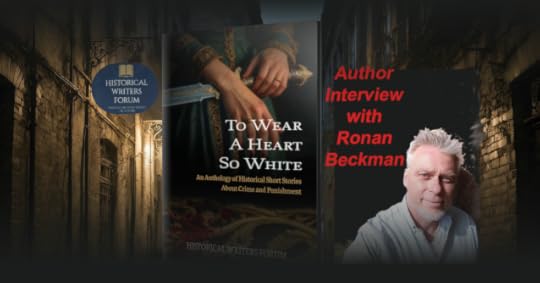
Today, I'm delighted to be able to share an interview with author Ronan Beckman, whose story Carte de Viste is included in the Historical Writers Forum's new anthology, To Wear a Heart So White. Take a look at the video below to hear about Ronan's inspiration for this story, the art of writing flashback sequences, and bringing his ancestors' stories to life...
So let's meet the book...
A cost for every action, and a price for every deed.
The Historical Writers’ Forum proudly presents seven stories of Crime and Punishment, from across the ages. From an anchoress to a war hero; from Italy to Missouri; this anthology has a story for everyone.
Included stories are:
The Ignoble Defence - Virginia Crow
Agatha’s Eyes - Rachel Aanstad
A Pact Fulfilled - Eleanor Swift-Hook
Carte de Viste - Ronan Beckman
A Dish Served Cold - Brenda W. Clough
Shadows of the Adriatic - Tessa Floreano
A Dangerous Road - D. Apple
To Wear a Heart So White is available here on #KindleUnlimited
Now, let's meet the author...
Ronan BeckmanRonan Beckman is a retired American educator who has lived in the UK for over 30 years. He often writes historical fiction based on the lives of real people that he has discovered through his genealogical studies of the family tree. The character of Sergeant Sven Stenander is the story of Ronan’s great-great-great grandfather. Many of the events in Sven’s colourful life were outlined in a poem written in Swedish that was handed down by a distant cousin, and several news articles that Ronan discovered in his research.
Crowvus Book Blog
- Virginia Crow's profile
- 128 followers


